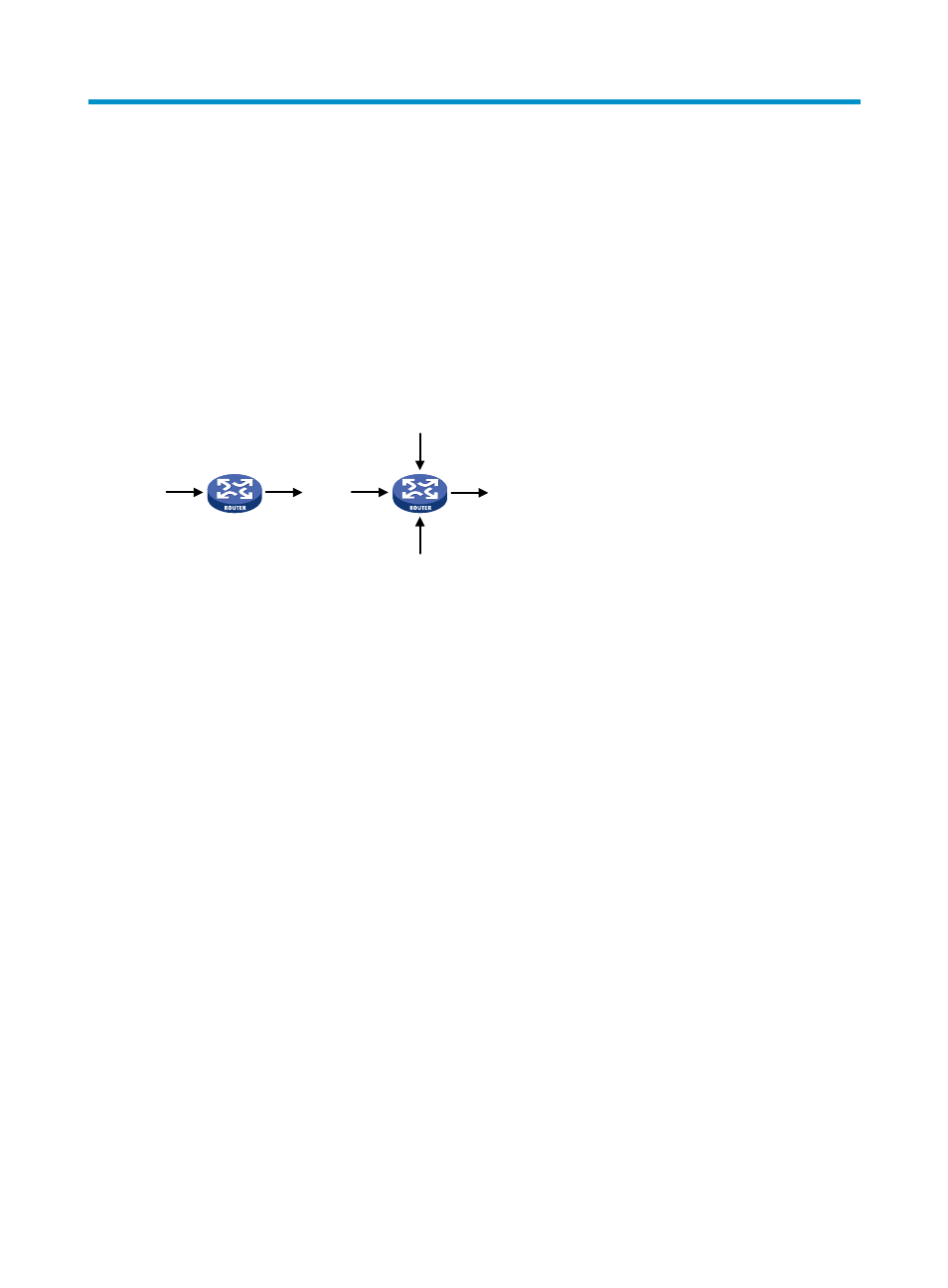Configuring congestion management, Overview, Causes, impacts, and countermeasures of congestion – H3C Technologies H3C WX3000E Series Wireless Switches User Manual
Page 46: Congestion management policies

37
Configuring congestion management
Overview
Causes, impacts, and countermeasures of congestion
Congestion occurs on a link or node when traffic size exceeds the processing capability of the link or
node. It is typical of a statistical multiplexing network and can be caused by link failures, insufficient
resources, and various other causes.
shows two common congestion scenarios:
Figure 10 Traffic congestion causes
Congestion may bring these negative results:
•
Increased delay and jitter during packet transmission
•
Decreased network throughput and resource use efficiency
•
Network resource (memory in particular) exhaustion and even system breakdown
Congestion is unavoidable in switched networks or multi-user application environments. To improve the
service performance of your network, you must take measures to manage and control it.
One major issue that congestion management deals with is how to define a resource dispatching policy
to prioritize packets for forwarding when congestion occurs.
Congestion management policies
Queuing is a common congestion management technique. It classifies traffic into queues and picks out
packets from each queue by using a certain algorithm. Various queuing algorithms are available, and
each addresses a particular network traffic problem. Your choice of algorithm affects bandwidth
assignment, delay, and jitter significantly.
Congestion management involves queue creating, traffic classification, packet enqueuing, and queue
scheduling. Queue scheduling treats packets with different priorities differently to transmit high-priority
packets preferentially.
This section briefly describes several common queue-scheduling mechanisms.
100M > 10M
(100M + 10M + 50M) > 100M
100M
100M
100M
50M
10M
10M
(1)
(2)
- H3C WX5500E Series Access Controllers H3C WX3500E Series Access Controllers H3C WX2500E Series Access Controllers H3C WX6000 Series Access Controllers H3C WX5000 Series Access Controllers H3C LSWM1WCM10 Access Controller Module H3C LSUM3WCMD0 Access Controller Module H3C LSUM1WCME0 Access Controller Module H3C LSWM1WCM20 Access Controller Module H3C LSQM1WCMB0 Access Controller Module H3C LSRM1WCM2A1 Access Controller Module H3C LSBM1WCM2A0 Access Controller Module H3C WA3600 Series Access Points H3C WA2600 Series WLAN Access Points
